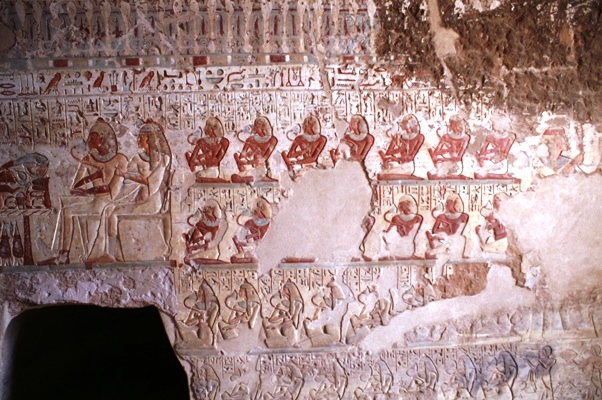

Venue: University College, Room 161, 15 King's College Circle, Toronto, ON
The site of Sais (Sa el-Hagar) is famous for the rich material culture dating to the Saite Period, the last Egyptian Dynasty before the Persians under Cambysses II defeated the Saite rulers and made Egypt into a satrapy. Work at the site began in 1997 with survey by the Egypt Exploration Society and the Ministry of Antiquities, and has been actively excavated under the direction of Dr. Penelope Wilson and her team from Durham University, UK since 1999. From the 2023 effort, the identification of a large storehouse was established with at least two occupation phases, dated to the Late Ramesside and subsequent Third Intermediate Periods. This presentation highlights the discoveries made in the 2024 season following continued excavation of the magazine at Kom Rebwa, which focused on more clearly defining the feature elements throughout.
Katlin Long-Wright is a fifth year PhD Candidate in the NMC department at the University of Toronto. His research focuses on knowledge deficits about social organization in the earliest stages of the Early State Formation process in the Predynastic Period of ancient Egypt. His methodologies utilize an integrative approach combining GIS quantitative spatial analysis of the built environment, and theoretical hermeneutical frameworks, such as heuristics, and materializations of non verbal forms of communications at the Naqada I/IIb site of Ma’adi. His previous experience includes the excavation of a fourth century Roman estate at Gerace, Sicily under the direction of Dr. Roger Wilson as well as being a member of the Austrian Academy of Sciences excavations at Tell Lachish, member of the CRANE project’s lab team under the direction of Stanley Klassen, and continued participation and member of the Egypt Exploration Society’s efforts at Sais under the direction of Penelope Wilson. He currently works as a consultant for Stantec, where for the past two and half years, he has provided archaeological expertise to clients whose construction efforts impact traditional indigenous territories.
Powered by iCagenda